In the history of the nation, Da Nang is known not only as the largest port city in Central Vietnam but also as a place associated with the expansion of Dai Viet's territory many centuries ago. The traces of an international gateway associated with Dang Trong still remain, and in the echoes of history, this is an important outpost in the fight against foreign invaders in the two sacred resistance wars.
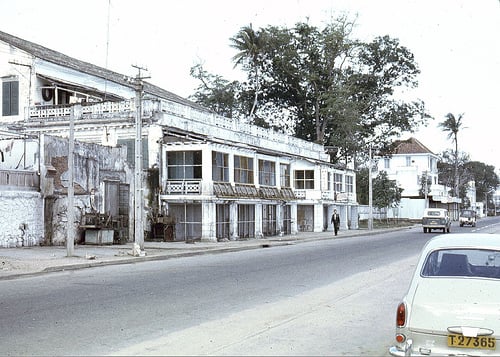
Ancient Da Nang
Da Nang City borders Thua Thien-Hue province to the North, Quang Nam province to the West and South, and the East Sea to the East. The city center is 764km north of Hanoi, 964km south of Ho Chi Minh City, and 108km northwest of Hue City. This is a city with high mountains, deep rivers, steep hills and midlands interspersed with narrow coastal plains.
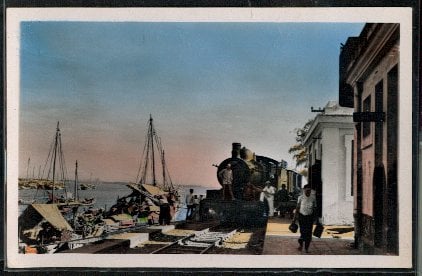
Danang Port
According to the Cham language, the place name “Da Nang” can be interpreted as “big river”, “big river mouth”. This place name has been noted on maps drawn from the 16th century onwards. That means, from very early on, in the formation of the name, the nature of a big river mouth, the nature of a port city has been noted as an important point of the city.
As one of the major estuaries of Quang Nam (expanding to the South), many centuries ago, even when Hoi An was still in its flourishing period in the 17th century, Da Nang seaport was highly appreciated. We know the famous painting of the Japanese Chaya family depicting the trading scene in Hoi An. If it is true that the seaport depicted in it is Da Nang seaport with Ngu Hanh Son and Co Co river, it is not surprising that the large-tonnage, high-tech seagoing ships of Japanese or Chinese merchants had to choose Da Nang seaport as the entrance instead of Hoi An seaport, because of the outstanding advantage of Da Nang bay being deep water and high safety. In fact, from the 18th century onwards, Da Nang's potential as a seaport has increasingly shown its superiority to the region.
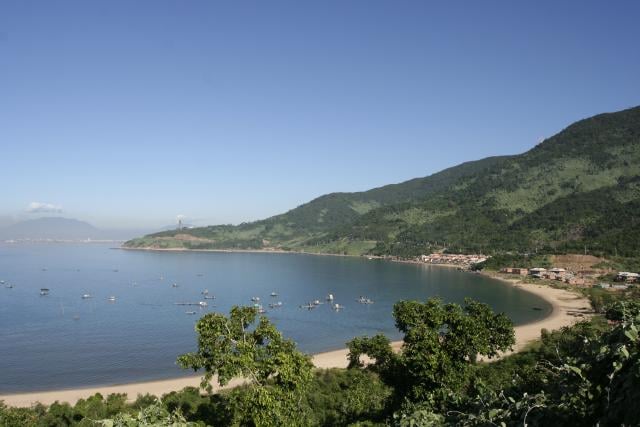
Danang Bay
In 1835, when King Minh Mang issued an edict: "Western ships are only allowed to dock at Cua Han, and are not allowed to trade at other seaports", Da Nang became the largest commercial port in the Central region. From this point onwards, instead of Dai Chiem port as before, trade and diplomatic relations were increasingly concentrated on a main hub of the Central region, Da Nang seaport. Thanks to its increasingly important position and role in the Central region, Da Nang began to develop local handicraft industries such as ship repair, agricultural and forestry product processing, and related commercial services.
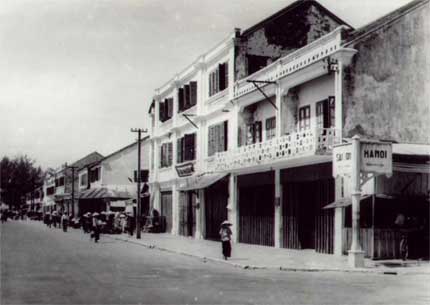 Da Nang Old Quarter
Da Nang Old Quarter In 1858, the French invasion of Vietnam began with an attack on Da Nang. After the establishment of the Indochinese Federation, France separated Da Nang from Quang Nam as a concession and renamed it Tourane. This administrative unit was under the direct control of the Governor-General of Indochina instead of the Hue court - although this town was located in the Central region.
In the early 20th century, Tourane was built by the French to become a Western-style urban area. Social infrastructure and production techniques were invested. Production and business sectors were formed and developed: agricultural production, small-scale industry, export processing, ship repair, and service business. Together with Hai Phong and Saigon, Tourane became an important commercial center of the country.
In March 1965, the US landed in Da Nang and established a large mixed military base here. In 1967, Da Nang was designated by the Republic of Vietnam government as a centrally-governed city and set the goal of building Da Nang into a political, military, and cultural center for tactical regions I and II.
In 1975, peace was restored, Da Nang (a city in Quang Nam - Da Nang province) began to restore the severe consequences of the war. Although there were still many difficulties, the restoration and development of the city achieved many results, especially in the renovation period, after 1986.
When the French attacked Vietnam, their first choice was Da Nang. The first Americans who landed in Vietnam also chose this place. That is certainly not a historical coincidence, although history, in addition to inevitability, always contains random elements. The importance and influence of Da Nang due to its primary position in the Central region and the whole country can be affirmed.
Looking at the map, Da Nang is clearly the end point of a large area. In front is the ocean. Behind is the Central Highlands. Even more widely is the entire Indochina region including Laos, Cambodia, part of Thailand and Myanmar. Today, the formation of the East-West economic corridor related to the Lao Bao border gate, the expansion of Highway 24B passing through the Ngoc Hoi tri-border area, and in the future, if the road heading straight to the West passing through Ben Giang, crossing the Dac Ta Oc border gate connecting Da Nang with the fertile Boloven plateau is invested in and built as in a promising outline recently noted by researchers, then clearly, Da Nang has been placed in, and will effectively promote, an important position in the trade and cultural exchange of the entire large Mekong River region.
Da Nang is located in the central part of Vietnam, on the North-South traffic axis by road, rail, sea and air, is an important traffic gateway of the Central and Central Highlands regions, and is the end point of the East-West economic corridor passing through Myanmar, Laos, Thailand and Vietnam.
Since 1997, when it became a centrally-governed city, Da Nang has undergone many positive changes. Over the past 10 years, Da Nang has continuously changed its appearance. Never before in the development process has Da Nang been so determined in its need to renew itself. The development of Da Nang is both its own need and to meet the requirements of a leading city with a shared responsibility for the Central region in the new period of the country.
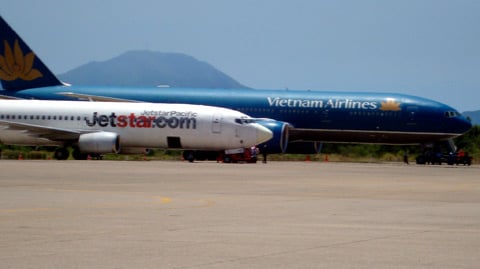
Da Nang International Airport
Before 1975, Da Nang International Airport was one of the busiest airports and is currently one of the largest international airports in Vietnam (after Noi Bai and Tan Son Nhat). This airport is identified by the international aviation organization as a transit point for East-West flights. Da Nang air routes can connect directly with Singapore, Bangkok, Seoul, which is very convenient for international exchanges. Da Nang International Airport is being upgraded with a total capital of 84 million USD, by 2012 the capacity to receive 4 million passengers/year. Currently, Da Nang International Airport is still the most important airport for both the Central and Central Highlands regions.
With a particularly favorable location for sea transport, Da Nang is only 310 nautical miles from Hai Phong port, 520 nautical miles from Saigon port, 480 nautical miles from Macao port, 550 nautical miles from Hong Kong port, 720 nautical miles from Manila port, 720 nautical miles from Malaysia port, 960 nautical miles from Singapore port, 1030 nautical miles from Taiwan port, 1060 nautical miles from Thailand port... so it is very convenient for travel and transportation. It only takes about two days and nights for goods from countries in the region such as the Philippines, Malaysia, Singapore, Thailand... to reach Da Nang and vice versa.
As the third largest commercial port in Vietnam, Da Nang port has an average depth of 15-20m, capable of receiving large ships with a capacity of up to 28,000 tons and a length of 220m. Da Nang Bay is wide and sheltered from the wind, making it a very safe place to anchor ships during the stormy season. In the early years of the 21st century, when Lien Chieu port with a capacity of 20 million tons/year is completed, the Da Nang port system, connected with Ky Ha and Dung Quat ports in the South, will become the largest integrated port cluster in the country, holding an important position on the Southeast Asian and Northeast Asian shipping routes.
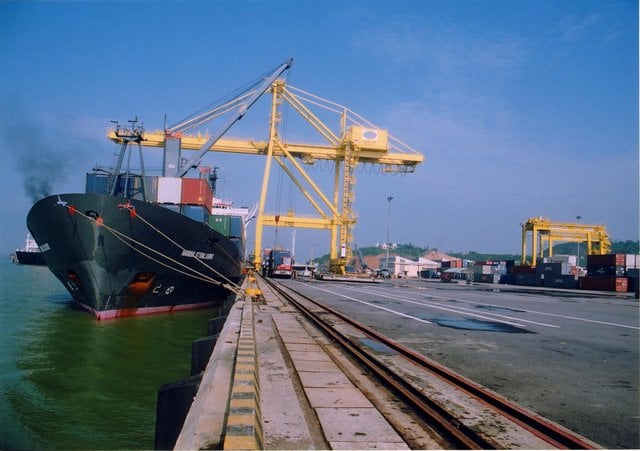
Danang Port
In just the past few years, Da Nang has changed a lot. Internal movements have made Da Nang increasingly expand its stature. Starting from the plan to develop infrastructure, especially transport infrastructure, carrying out urban renovation, building a new environment in a broad sense, creating conditions for new development. Exploiting the available advantages, in recent years Da Nang has had clear changes in the pace and momentum of development. The average GDP growth rate is higher than the national average, the production value of industrial, agricultural and aquatic products has developed comprehensively... export turnover has increased, the tourism, trade and service sectors have changed positively.
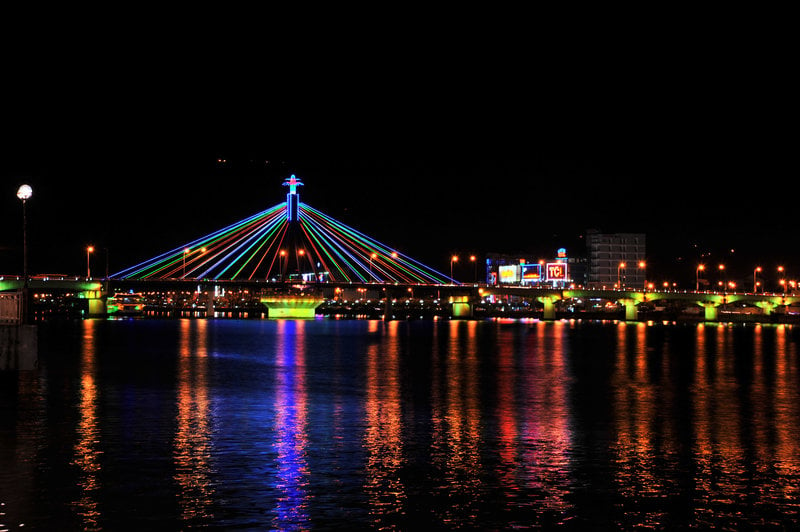
Han River Bridge
In the past, many people complained about the fragmented and aging industry of Da Nang, but now things have changed. With the policy of using industry as a lever for development, Da Nang's economic structure has shifted significantly towards increasing the proportion of industries and services in line with the general trend of the whole country and large cities. To prepare for a breakthrough of the key economic region of the Central region, with its leading role, in recent years, Da Nang has made efforts to improve its image and position to meet the general requirements of the region.
With its position as the economic center of the Central Highlands region, Da Nang is home to large companies in the textile, consumer goods, processing, mechanical, and construction materials industries. Da Nang's industry has achieved an average growth rate of 20% per year. The city is aiming to become one of the leading localities in the industrialization and modernization of Vietnam, becoming an industrial city before 2020.
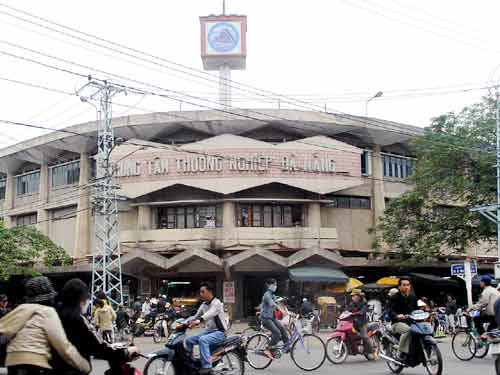
Con Market
Da Nang currently has two largest markets located in the city center, Han Market and Con Market; along with large supermarkets that have recently opened in the past few years such as Bai Tho Plaza, Big C supermarket (Vinh Trung Plaza), Intimex supermarket, Co.op Mart supermarket... These are the main commercial centers of Da Nang.
In the field of banking and finance, Da Nang is currently the largest center of the Central Highlands region, with more than 40 state-owned commercial banks, joint-stock commercial banks, joint venture banks, and financial companies operating, along with dozens of large-scale securities trading centers...
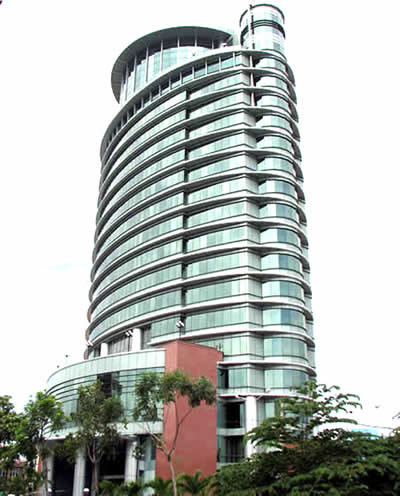
Danang Software Park
Da Nang is currently considered one of the three largest postal centers in the country with all types of modern and convenient services, such as landline phones, mobile phones, card phones, pagers, Internet..., fast money transfer, express delivery, flower delivery... The city's telecommunications network currently includes 2 main switchboards and 12 satellite switchboards with a capacity of more than 40,000 numbers. The quality and quantity of telecommunications services are increasingly improved thanks to the exploitation and use of world-leading technologies such as PDH - 140Mb/s digital Viba network, SDH - 2.5bb/s optical cable network, Toll AXE-10 switchboard... international, regional and national submarine optical cable lines, especially the SMW3 submarine optical cable line that has been and will be put into operation, allowing Da Nang Post Office to improve business efficiency and service to the level of countries in the region.
In addition to the natural advantages of Da Nang, the city is also surrounded by three World Cultural Heritages: Hue, Hoi An, My Son. A little further away is the World Natural Heritage Phong Nha - Ke Bang National Park. Therefore, Da Nang is considered an important transit point on the Central Heritage Road. Thanks to that, Da Nang is considered a city of tourism, a city of relics and scenic spots. Due to its special terrain, with mountains, forests, midlands, plains, seas... Da Nang possesses a diverse beauty. There is the majesty and freedom of high mountains and the vastness and lyricism of the sea; there is the softness and strength of rivers and also the hidden corners and curves of high passes; there is the dreaminess and gentleness of sandy beaches, river wharves and also the magnificence and strength of streets, monuments, high-rise buildings...
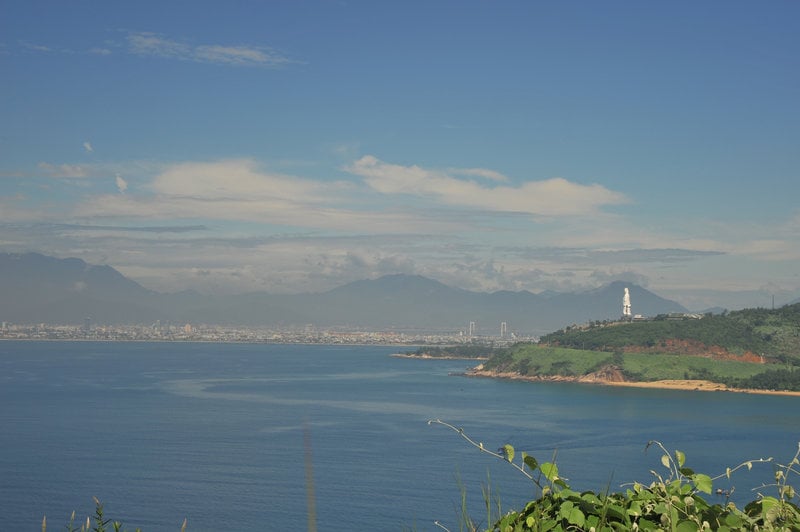
A corner of the city seen from Son Tra peninsula
Coming to Da Nang, tourists can enjoy wonderful moments on the mountain top, in the deep forest or on the riverbank, beach; can enjoy international quality accommodation services at 4-5 star tourist areas such as Furama, Sandy Beach, Son Tra Resort & Spa... or fresh eco-tourism areas such as Suoi Luong, Ba Na, Son Tra, Non Nuoc...
Up to now, in Da Nang, many tourism projects have been approved for investment with a total investment capital of billions of USD. Among them, many projects have attracted large corporations such as Vina Capital, Indochina Capital... to invest in golf courses, hotels, luxury resorts...
Investing in health care and education to ensure a high quality of life for the people is an important goal in the city's efforts. At present, Da Nang has 18 general and specialized hospitals, 11 district hospitals and health centers, 47 commune and ward health stations with more than 900 private clinics. In particular, with a very high determination, Da Nang has built and put into operation the Women's Hospital, calling for contributions from many social sectors to invest in the Cancer Hospital, gradually creating conditions for people in the city and neighboring areas to reduce the burden of medical costs when facing serious diseases that have long been expected only from large medical centers at both ends of the country. With the establishment of the University of Medicine and Pharmacy and the University of Medical Technology in the city, Da Nang is aiming to become the medical center of the Central Highlands and the whole country, providing high-quality human resources and medical services, serving the socio-economic development of the country.
As the largest educational and training center in the Central Highlands region and the third largest in the country (after Hanoi and Ho Chi Minh City), Da Nang currently has 15 universities, academies, 17 colleges; many vocational colleges, vocational training centers and more than 200 schools from high school to preschool.
Danang University currently has 1,890 staff, including 130 lecturers. The quality of the staff is constantly improving. Currently, 20% of the school's lecturers have doctoral degrees and 70% have master's degrees. In order to strengthen the teaching staff capable of undertaking the tasks of teaching and applied research in the future, in recent years Danang University has recruited many new lecturers and sent them abroad for postgraduate training with different funding sources.
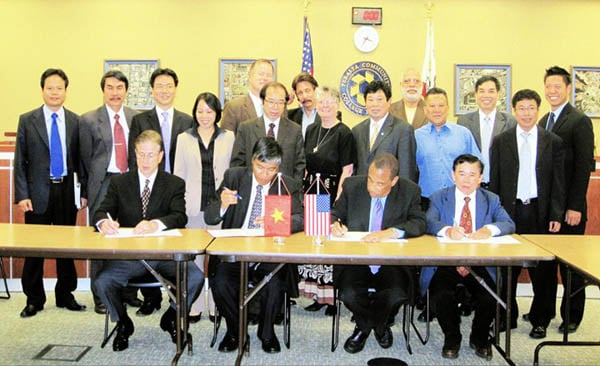
International cooperation in training at Danang University
According to the project to develop Danang University until 2015 approved by the Minister of Education and Training, in the near future, there will be a number of more universities and research institutes established in the city such as: International University, University of Information Technology and Communications, University of Medicine and Pharmacy (Upgraded from the current Faculty of Medicine and Pharmacy), University of Medical Technology (Upgraded from the Central College of Medical Technology II), Open University, Institute of Postgraduate Training...
Focusing on long-term human resource training for the city's development, the system of general schools at all levels in Da Nang has received significant investment. In which, specialized general schools such as Nguyen Khuyen and Le Quy Don are considered the key spearheads for providing input for universities. In recent years, from these schools, generations of young intellectuals in Da Nang have been nurtured and matured, making initial positive contributions to the city. In the past, at the most difficult and important times in history, Da Nang people always knew how to find the most appropriate, correct, and beneficial ways of behaving... for their existence and development. Where is Da Nang in the new renovation of the country, what role does Da Nang play in the general development of the Central region and the whole country, the answer is not only for Da Nang people.
Now, not only people who come from far away, but also people who are living in Da Nang today sometimes wonder how, in what way, Da Nang has been able to quickly change its appearance in such a short time.
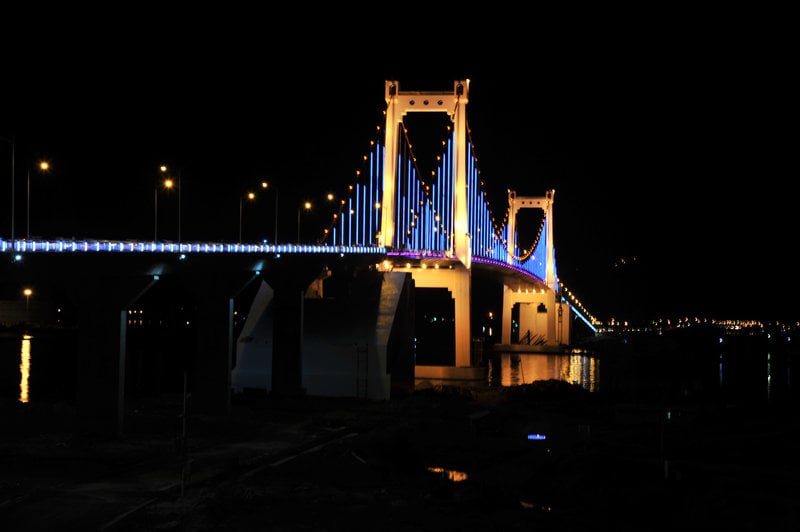
Sparkling Thuan Phuoc Bridge
There may be many different answers, but it is easy to see that there is a common determination and common effort of all citizens of the city, from the highest leaders to ordinary people, from the City Party Committee to Party organizations and grassroots unions... Just like facing many important historical events, social consensus with great contributions from the people has changed the face of the city, giving this land great strength, creating momentum for the next steps on the path of development towards the future of the city.
Standing on the shore of the East Sea, surrounded by waves all year round, the people of the Central region have been challenged by their nature to be strong enough to stand against the wind. Since ancient times, the boats crossing the sea and the attitude of the Cham people towards the sea show that the Central region in general, and Da Nang in particular, was once a powerful land in terms of maritime economy.
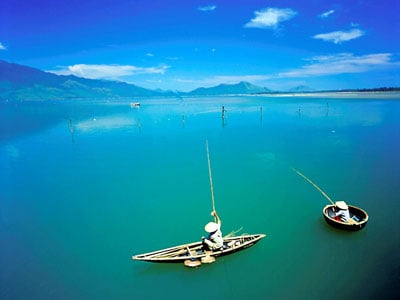
Nature and people of Da Nang
Nowadays, not only standing at the head of the wind, the people of the Central region are standing at the crossroads of international exchange from India across the Pacific Ocean. The era of integration with new opportunities opens up horizons for ships with many ambitions, Da Nang will have to be the locomotive for the key economic region of the Central region to go out to the open sea.
Vietnam is facing new opportunities and new challenges when joining the WTO, Vietnam is facing the opportunity to reach out to the sea. Da Nang has always been a large seaport, a seaport in many senses, a port and also an open land, a land of integration and development. Da Nang will have many opportunities and also requires many efforts... The history of formation and development of Da Nang ensures trust. The new signals of this city in the current period further ensure that trust. The road ahead requires much effort but Da Nang will develop for its own survival, and also to be worthy of its position as a driving force city for the Central and Central Highlands regions, worthy of the role assigned by the whole country.
(According to Danang Panorama - Danang Publishing House, March 2010)












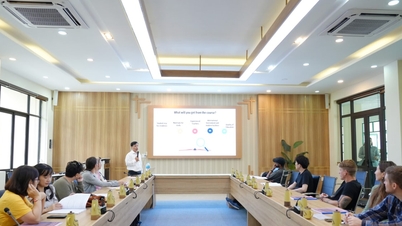

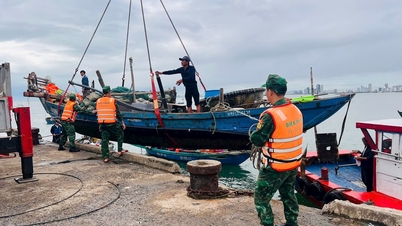




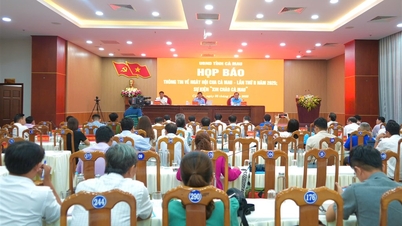
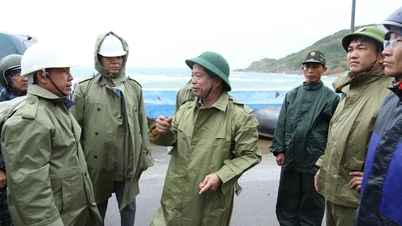

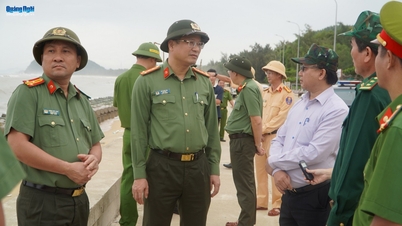
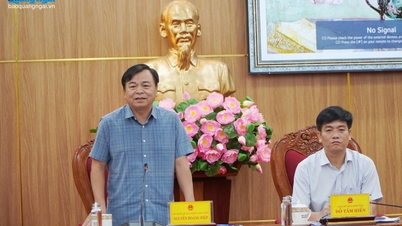



![[Photo] Opening of the 14th Conference of the 13th Party Central Committee](https://vphoto.vietnam.vn/thumb/1200x675/vietnam/resource/IMAGE/2025/11/05/1762310995216_a5-bnd-5742-5255-jpg.webp)




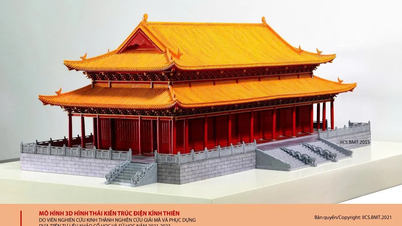




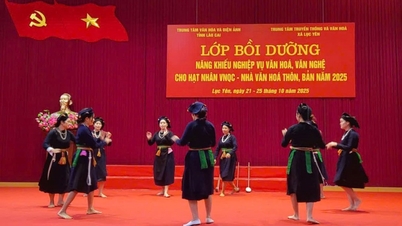




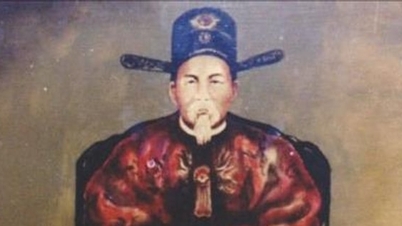






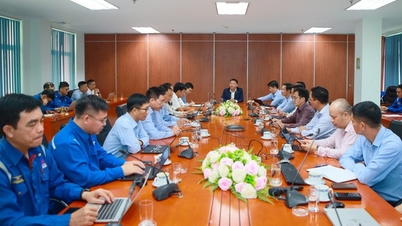

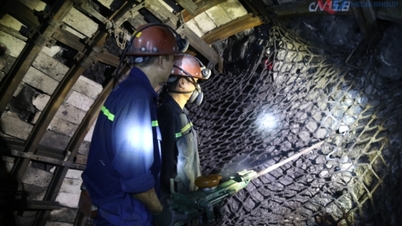

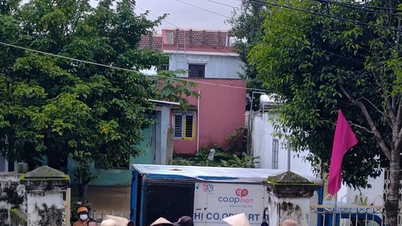
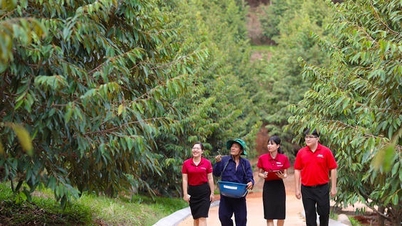



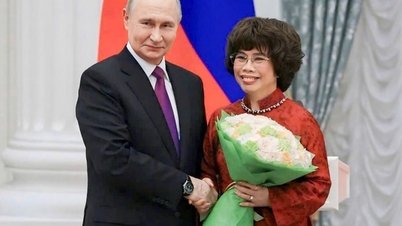
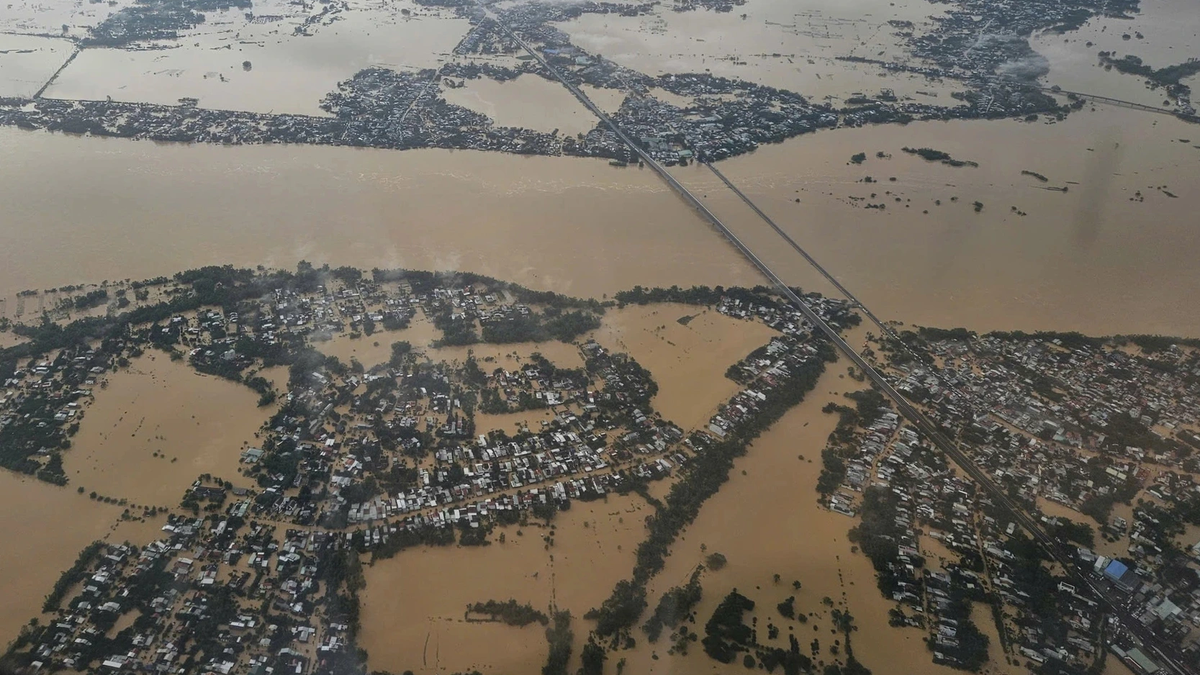


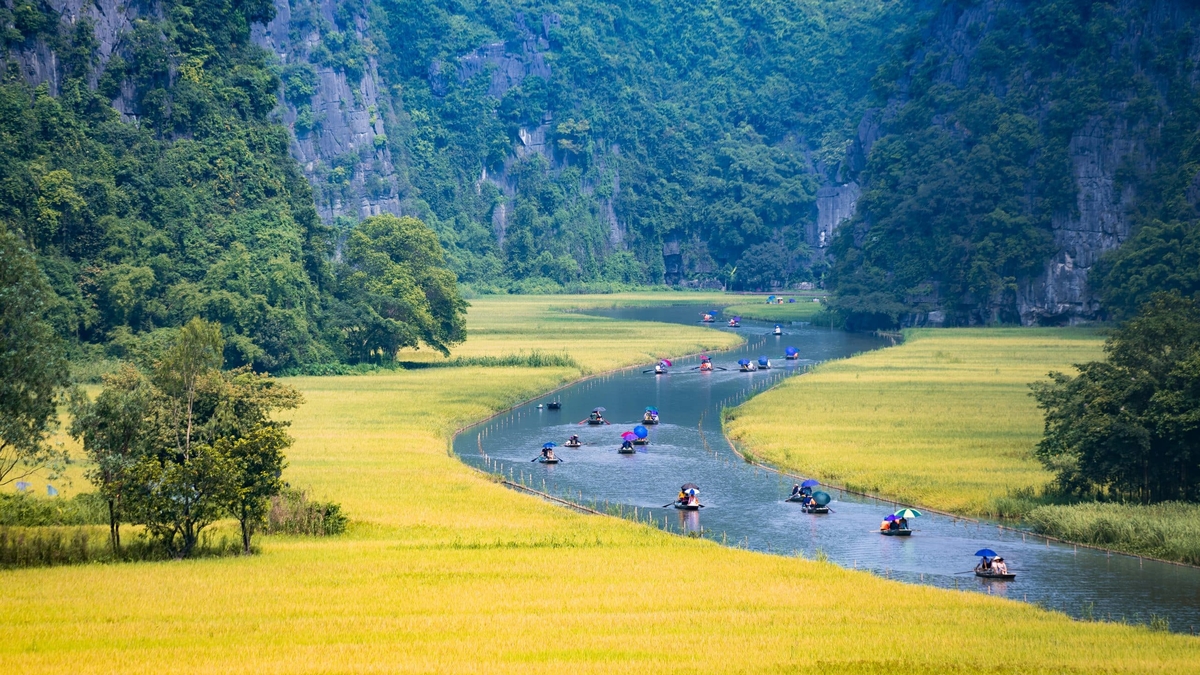
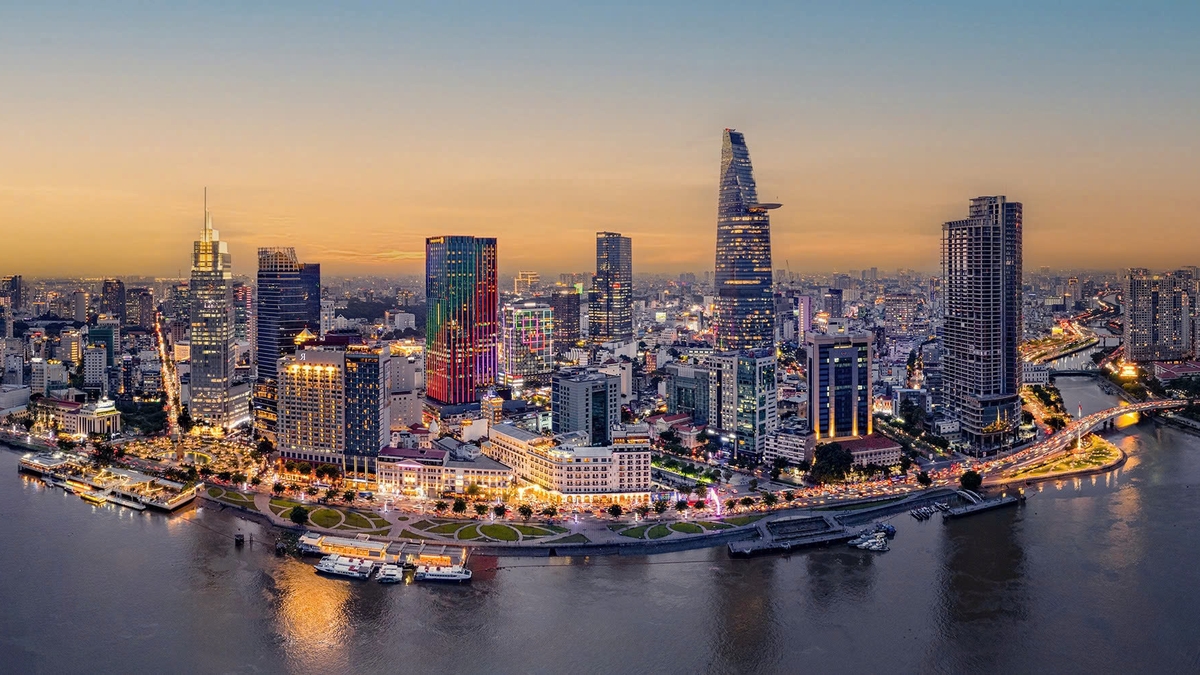
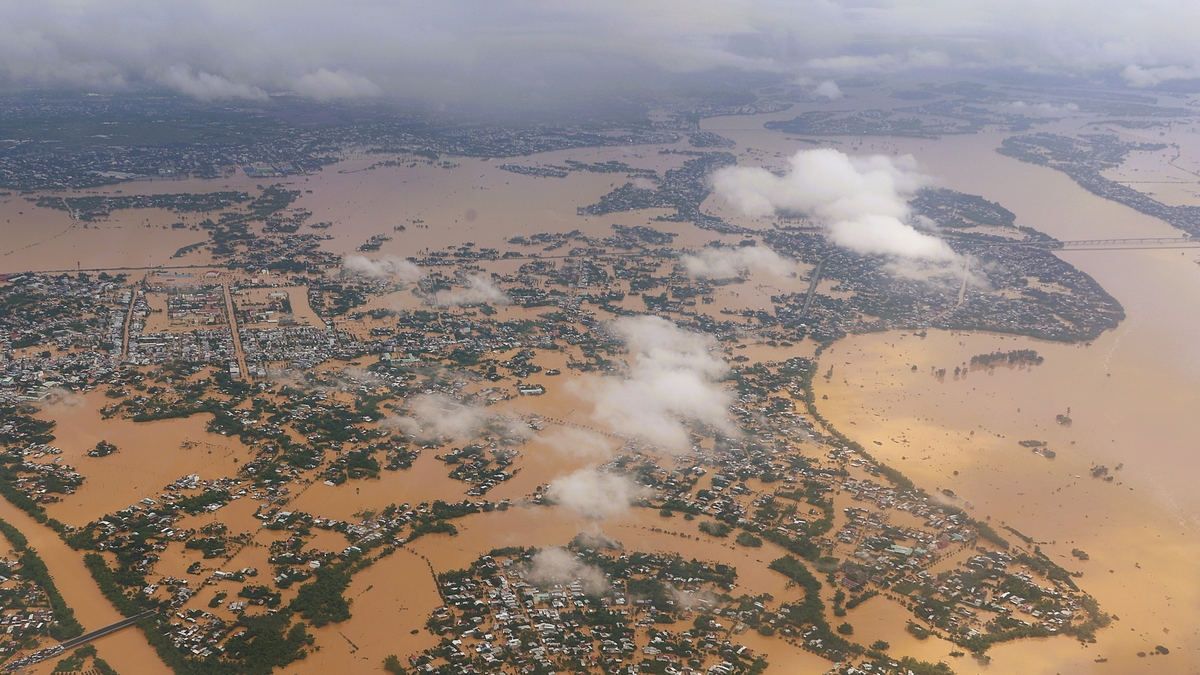









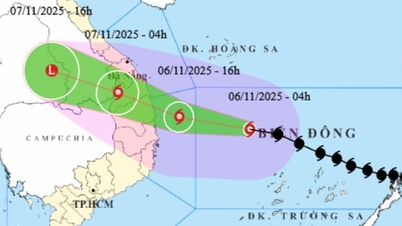












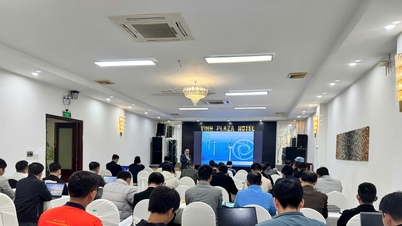




















Comment (0)